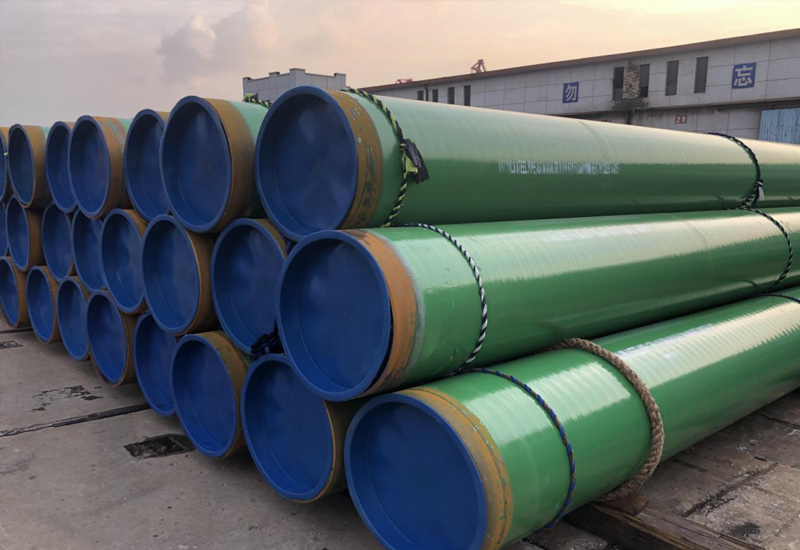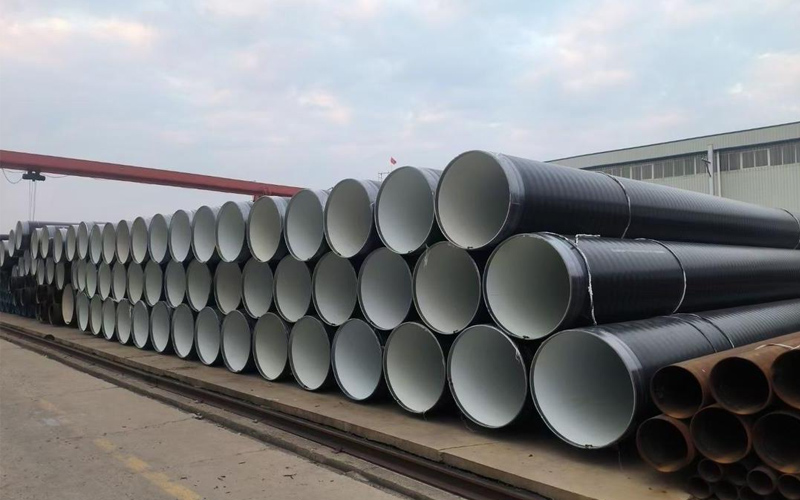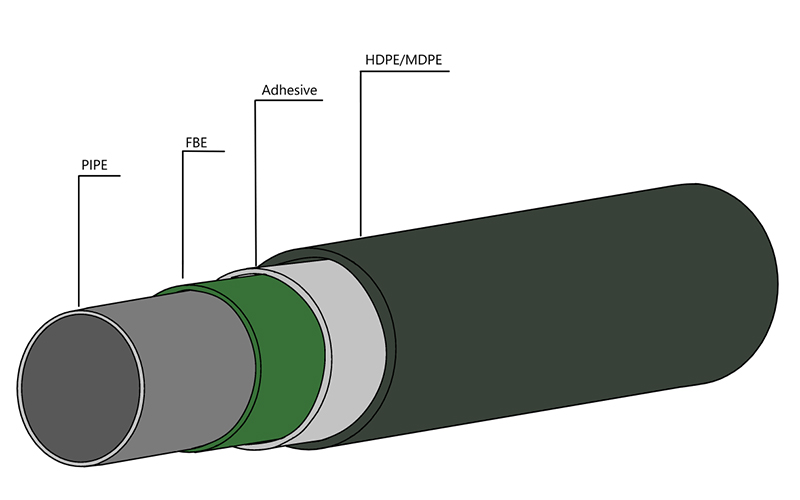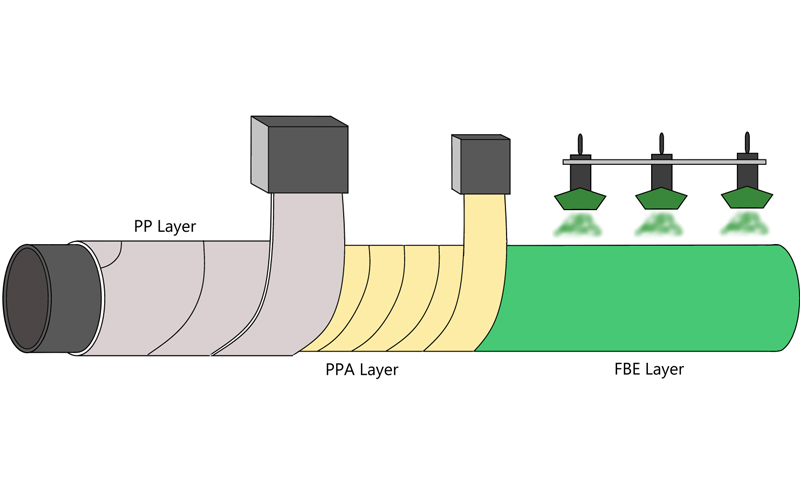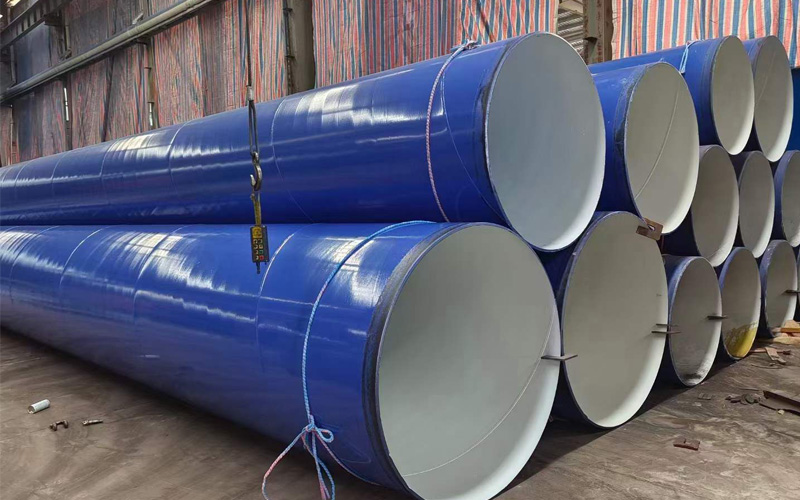FBE Coating Adhesion: The Importance of Sa2.5 Blasting
Introduction – The Secret of Coating Life Lies in the Surface
In the field of pipeline anti-corrosion, FBE steel pipe—which is protected by a Fusion Bonded Epoxy (FBE) coating—has been recognized as one of the most effective anti-corrosion solutions. However, many people may not know that 90% of the successful application of FBE coating depends on its adhesion to the surface of the steel pipe. Just as a skyscraper needs a solid foundation, a high-quality FBE coating must be built on a perfectly treated steel pipe surface. The quality of surface treatment directly determines whether the coating can effectively protect the steel pipe from corrosion, chemical erosion and physical damage for a long time.
In actual engineering practice, we often encounter such a situation: two manufacturers using the same FBE powder material have final products with coating lifespans that differ by several times. The root cause of this disparity often does not lie in the coating material itself, but in the quality control of surface treatment. Among them, achieving the Sa2.5 standard through sandblasting rust removal is the most crucial factor in ensuring the long-term lifespan of the coating.
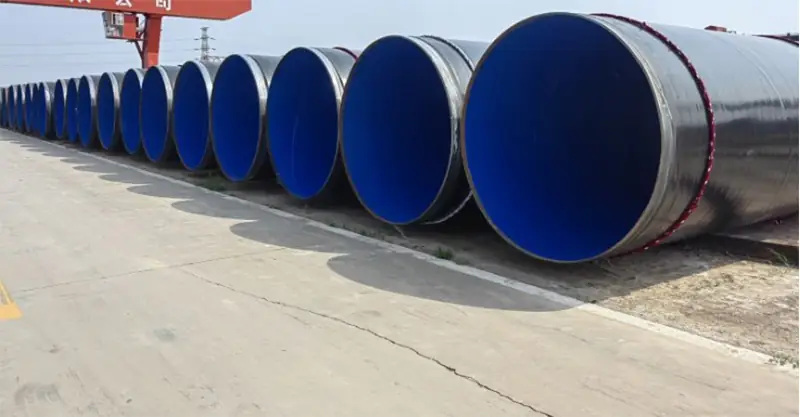
What is Sa2.5 grade sandblasting and its importance?
Sandblasting rust removal at Sa2.5 grade (near-white grade cleaning) is an internationally recognized surface treatment standard, formulated by the Swedish Standardization Committee and widely adopted globally. This standard requires that after the steel surface is sandblasted, almost all the oxide scale, rust and contaminants are completely removed, and only a very small amount of minor color spots or defects are allowed to remain.
Specifically, the Sa2.5 standard requires:
· No grease, dust, oxide scale, rust or other foreign substances should be visible on the surface
· Any residual contaminants should only show a slight shadow or slight streaks of different colors
· The surface must form a uniform and appropriate roughness profile
· The final cleanliness should be at least 95% or above, with no visible contaminants
Compared with the lower-level standards, the surface treated with Sa2.5 grade presents a grayish-white metallic luster, providing an ideal adhesion base for the coating. This level of cleanliness ensures that no weak points will form between the coating and the metal substrate due to residual contaminants, thereby avoiding the risk of early failure.
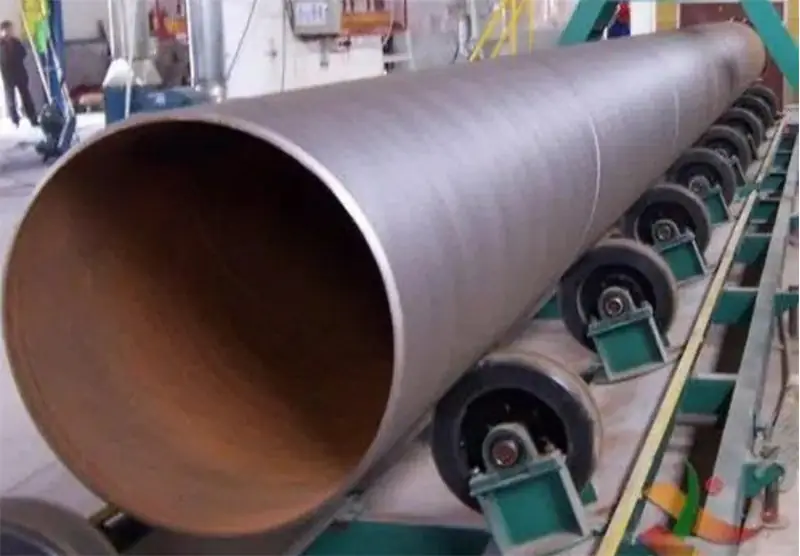
The direct connection between surface treatment and coating adhesion
1.The mechanical interlocking mechanism at the micro level
The bonding of FBE coating to the surface of steel pipes mainly relies on two mechanisms: mechanical interlocking and chemical bonding. The rough surface created by sandblasting treatment greatly increases the actual contact area between the coating and the substrate. Under the microscope, the surface treated with Sa2.5 grade sandblasting forms countless tiny “peaks” and “valleys”, and these microscopic structures provide the best “grip” for the liquid FBE powder.
When FBE powder melts on the surface of heated steel pipes, it flows into these microscopic irregularities, forming thousands of tiny “anchor points”. After cooling and curing, these mechanical interlocking structures enable the coating to resist external stresses, including expansion and contraction caused by temperature changes, soil stress, and physical impacts during transportation and installation.
2.The foundation of chemical bonding
In addition to mechanical interlocking, chemical bonds will also form between the FBE coating and the steel surface. However, the prerequisite for this chemical bonding is that the surface of the steel must be absolutely clean. Any residual contaminants, such as soluble salts, oils or moisture, will form a weak boundary layer at the interface, preventing the epoxy resin from forming strong chemical bonds with iron molecules.
Studies show that even if the surface appears clean, if the content of soluble salts exceeds the standard requirements (such as chloride >20μg/cm²), corrosion under the coating will still occur quietly, eventually leading to coating bubbling and peeling. Sa2.5 grade sandblasting treatment, combined with appropriate cleanliness testing, can ensure that surface contaminants are reduced to the lowest level, creating ideal conditions for chemical bonding.
3.The influence of surface energy
The surface treated with Proper sandblasting has a high surface energy, which greatly improves the wettability of FBE powder. Good wettability means that the molten epoxy resin can be evenly spread and closely adhere to the steel surface, expelling air and moisture at the interface and forming a defect-free coating film.
Our commitment: How to ensure that every steel pipe meets the Sa2.5 standard
Strict process flow control:
To ensure that each steel pipe meets the Sa2.5 grade standard, we have implemented multiple quality control measures:
1. Pre-treatment inspection
Before sandblasting treatment, we conduct a preliminary inspection of all steel pipes to remove severe grease contamination and welding spatter. For heavily oil-stained steel pipes, we use environmentally friendly alkaline cleaning agents for pretreatment to ensure that the sandblasting abrasives are not contaminated.
2. Precise control of sandblasting parameters
We use steel grit and shot mixed abrasives that meet the specifications, and strictly control the particle size ratio, hardness and shape of the abrasives. During the sandblasting process, we monitor the following key parameters
Compressed air pressure: Maintain within the range of 0.6 to 0.7MPa
Spray gun Angle and distance: Maintain the optimal spray Angle (75-90°) and distance (100-300mm)
Abrasive flow rate: Ensure uniform and continuous surface treatment.
Environmental conditions: Control the humidity below 85% and the temperature at least 3℃ above the dew point.
3. Real-time quality inspection
After sandblasting treatment, we immediately carried out multiple tests:
· Surface cleanliness inspection: Visual comparison is conducted using the comparator method (such as the ISO 8501-1 standard spectrum) to ensure compliance with the Sa2.5 standard. All of our inspectors have received professional training and obtained corresponding certifications.
· Surface roughness test: Use a roughness meter to measure the surface profile at multiple points to ensure that the Ra value remains within the ideal range of 50-90μm. An appropriate roughness not only provides a good mechanical anchoring effect but also avoids the problem of too thin coating at the wave peaks.
· Soluble salt content detection: The Bresle method is used to test the surface soluble salt content to ensure that the chloride content is below the international standard requirement of 15μg/cm².
· Dust grade assessment: The amount of residual dust on the surface is evaluated in accordance with ISO 8502-3 standard to ensure that it does not exceed the requirements of grade 2.
4. Time control
After surface treatment, we strictly control the time window for applying FBE (usually within 4 hours) to prevent secondary oxidation or contamination of the treated surface. In a high-temperature and high-humidity environment, this time window is further shortened.
5. Full documentation throughout the process
Each steel pipe has a complete quality tracking record, including sandblasting parameters, inspection results and operator information, to ensure full traceability throughout the process
Conclusion – Reliable quality derived from the surface
In the field of FBE coating anti-corrosion, strict surface treatment is the fundamental guarantee of product quality. Although Sa2.5 grade sandblasting treatment is not the lowest-cost option, it is the most economical and effective solution to ensure that the coating reaches the designed service life. Practice has proved that for every additional yuan invested in surface treatment, 10 yuan or even more can be saved in later maintenance costs.
We are well aware that outstanding quality stems from an unwavering pursuit of every detail. From surface treatment to FBE coating, from inspection and testing to packaging and shipment, we insist on demanding the strictest standards of ourselves, because we understand that what you entrust to us is not merely a steel pipe, but a heavy trust and responsibility.
On the invisible front line of corrosion protection, Sa2.5 grade surface treatment is the first and most important layer of armor we put on the steel pipes. Only when this foundation is solid can the FBE coating truly exert its long-lasting anti-corrosion protective effect, providing reliable guarantees for energy transmission, infrastructure construction and even the development of the national economy.
Choosing the right surface treatment standard means choosing long-term safety and peace of mind. We promise that every steel pipe processed by us will be in the most perfect surface condition to meet the protection of the FBE coating, providing reliable protection for your project for decades.
Get Your Custom Steel Pipe Quote Today!
Provide us with your project details (like application, specifications, quantity). Our experienced team will respond with a tailored solution and competitive quote within 24 business hours.
Related Articles
ASTM A53 vs. API 5L: A Guide to Selection and Application
Introduction:Technology differences determine success or failure, and selection needs to be “precise”
Steel Density Analysis: Core Differences between Mild and Medium Carbon Steels and Industrial Applications
3LPE coated steel pipe: a solid barrier in the field of industrial corrosion protection
3LPP coated pipe: anti-corrosion guard in high temperature and high pressure environment
FBE steel pipe: the technological armor of the steel defense line
HOT TAGS
latest posts
- 3LPP coated pipe: anti-corrosion guard in high temperature and high pressure environment
- ASTM A53 LSAW Steel Pipe Selection Guide for Oil and Gas Transportation Pipelines
- API 5L LSAW Pipe: A Deep Dive into PSL1 vs. PSL2
- Steel Pipe Sizing Errors? DN vs. OD Explained for Buyers
- NDT for Pipe Welds: X-ray vs. Ultrasonic Testing




